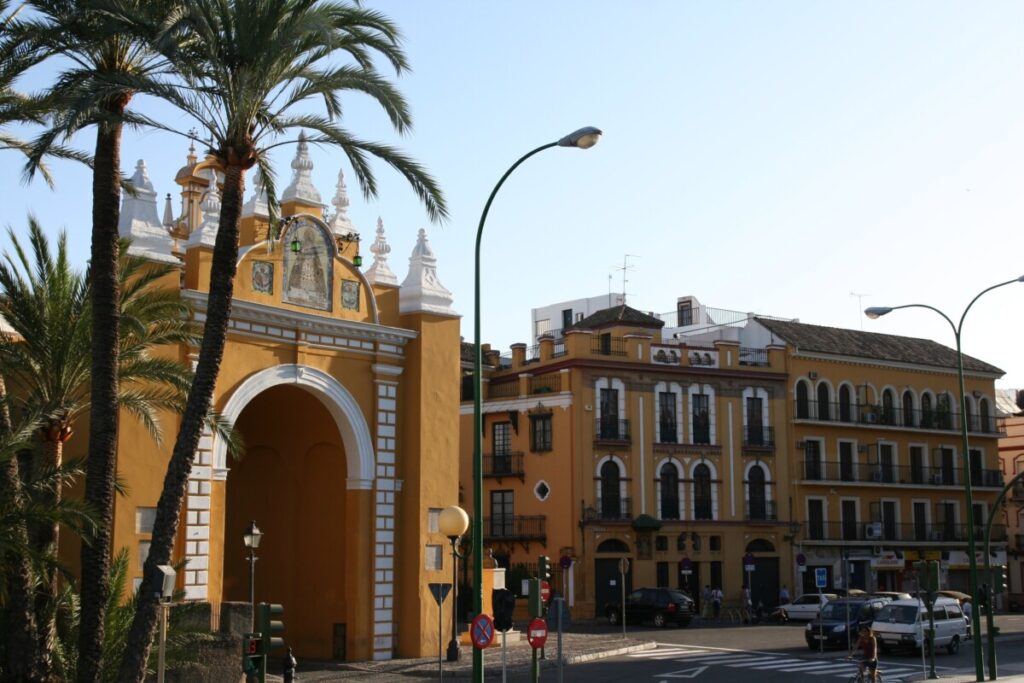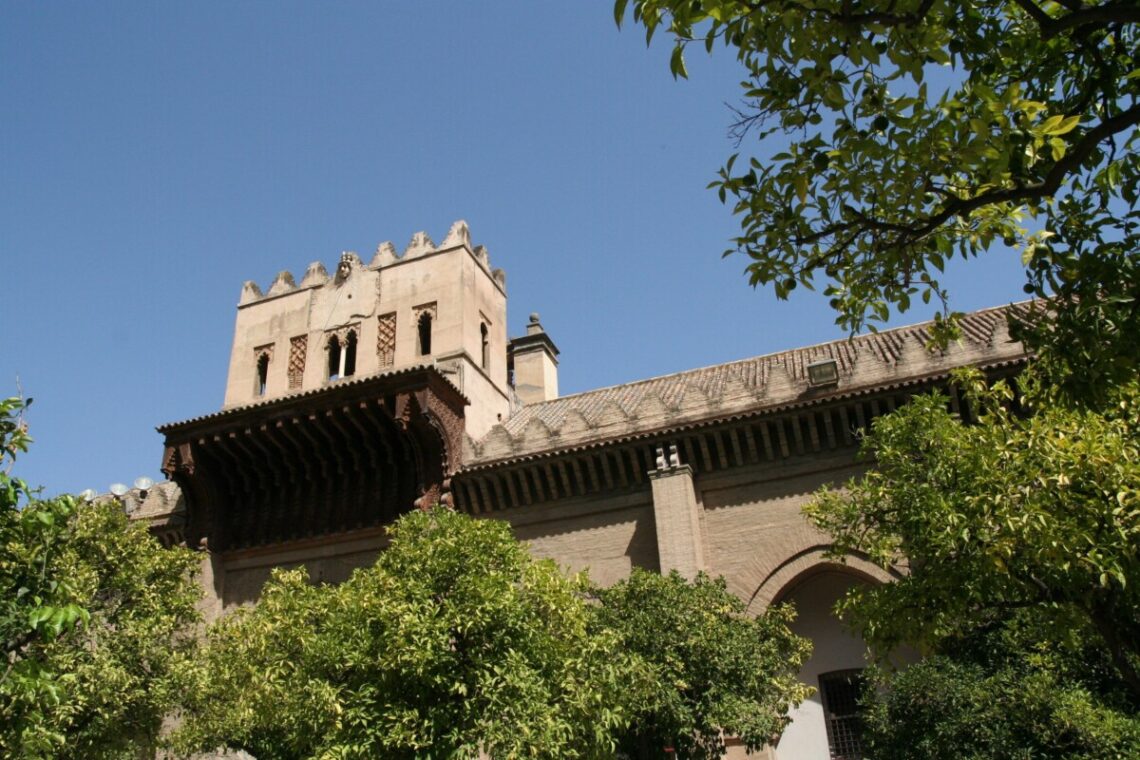
Seville is hot
We went to Seville in Andalucia in Spain on a day trip. That’s quite unfair towards the city, it deserves more. And on top of that, when it’s 40 degress (or 51 as we saw on one sign) it’s too hot do to much.

Previously we had visited Ronda, Jerez and a few other places in in the western part of Andalucia.
After visiting the two main attractions, the cathedral and the royal palace Alcazar, we simply hopped on a sightseeing bus to see the rest of the city.
While the temperature gauges might not have been entirely accurate, there’s no doubt it was hot. Fortunately, both the cathedral and Alcazar offered plenty of shade and relief from the scorching sun.
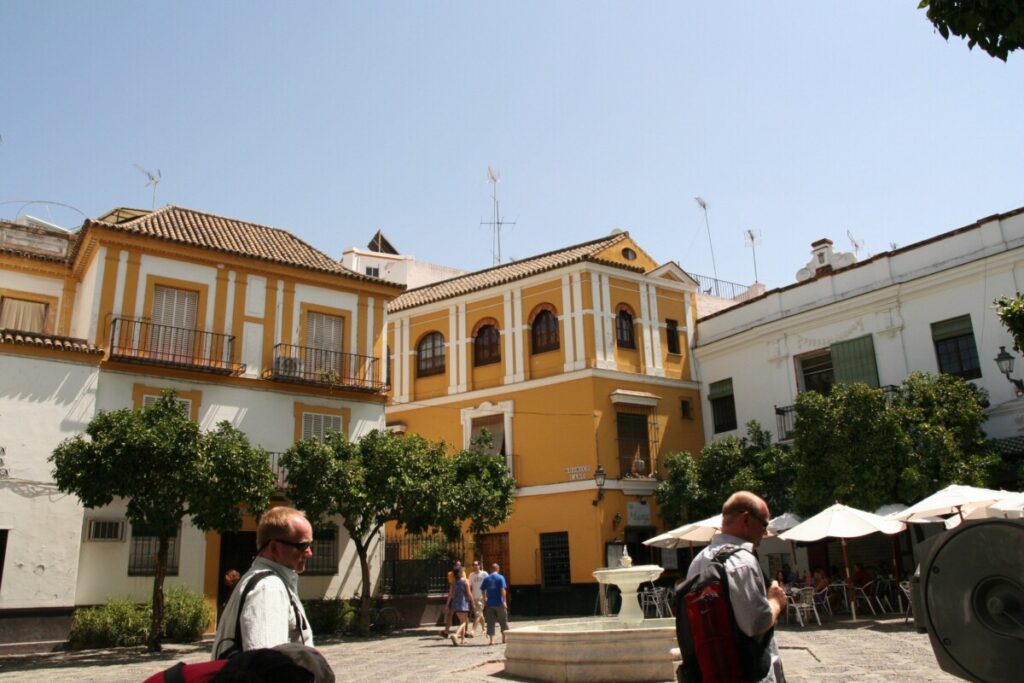
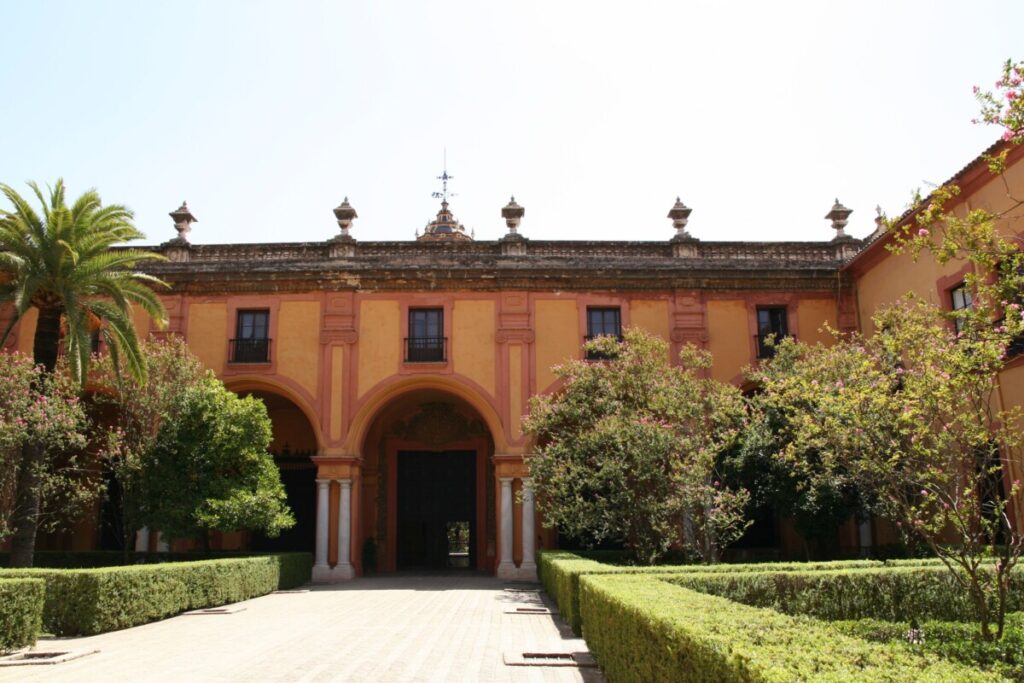
Around Plaza del Triunfo
Around Plaza del Triunfo stand three monuments that were collectively inscribed on UNESCO’s World Heritage List in 1987: the Royal Alcázar Palace of Seville, the General Archive of the Indies, and the Catedral de Santa María de la Sede as it’s officially called.
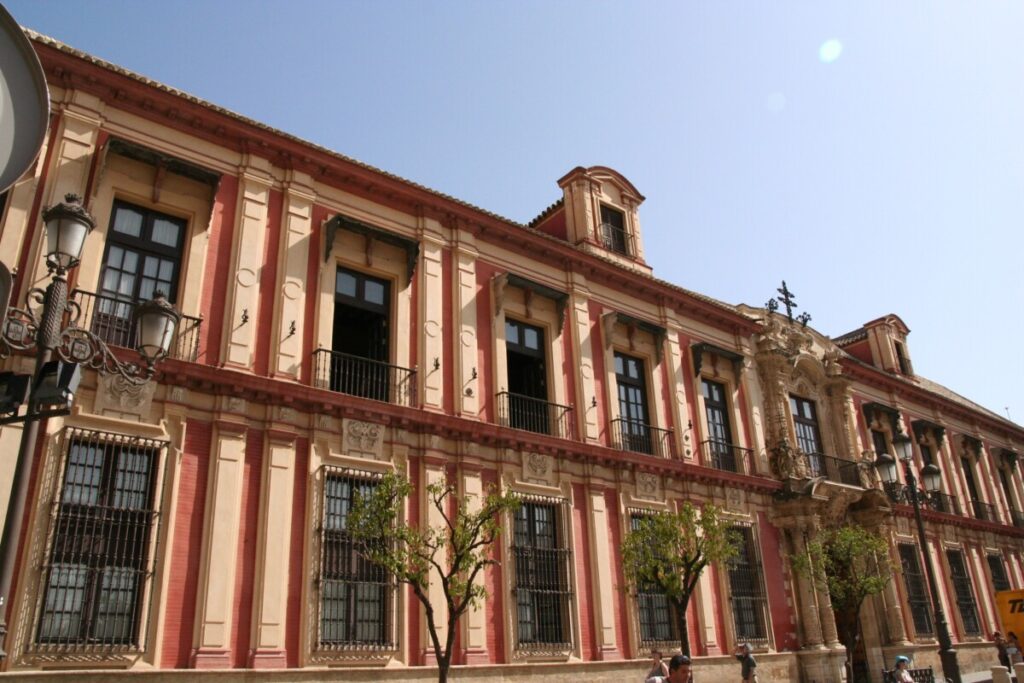
We didn’t visit the archive this time, but it houses the largest collection of documents related to Spain’s activities in America and the Philippines. The archive contains invaluable historical treasures, including handwritten texts by Christopher Columbus, Ferdinand Magellan, Vasco Núñez de Balboa, Hernán Cortés, Francisco Pizarro, and others.
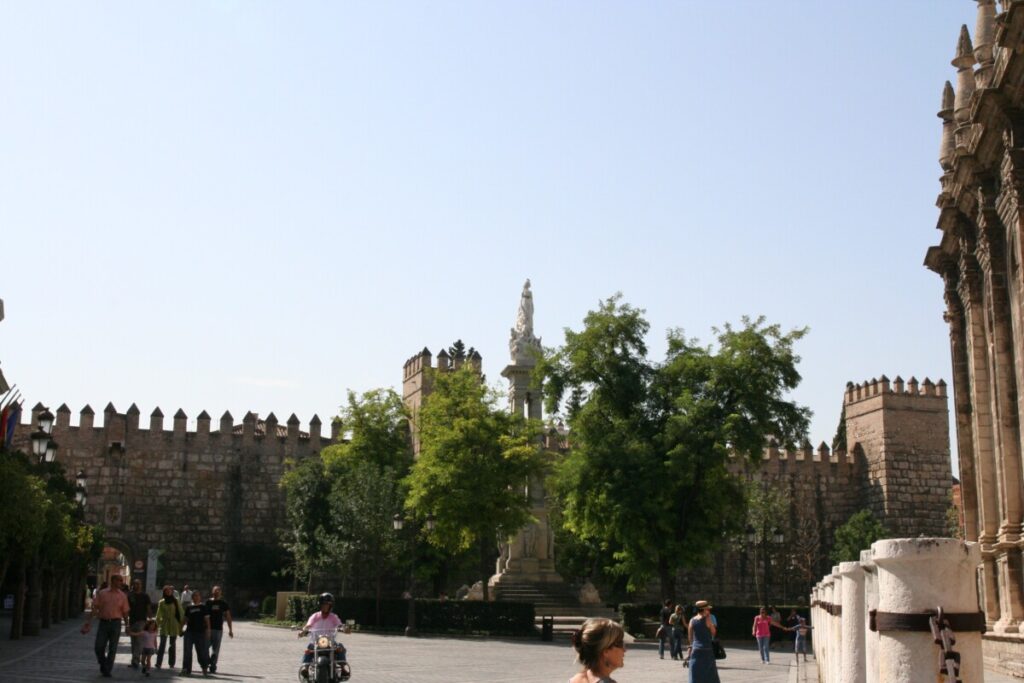
The worlds largest Cathedral
We thoroughly explored the Cathedral, the world’s largest cathedral and the third-largest church, along with its bell tower. The cathedral is where Christopher Columbus’s tomb is located.
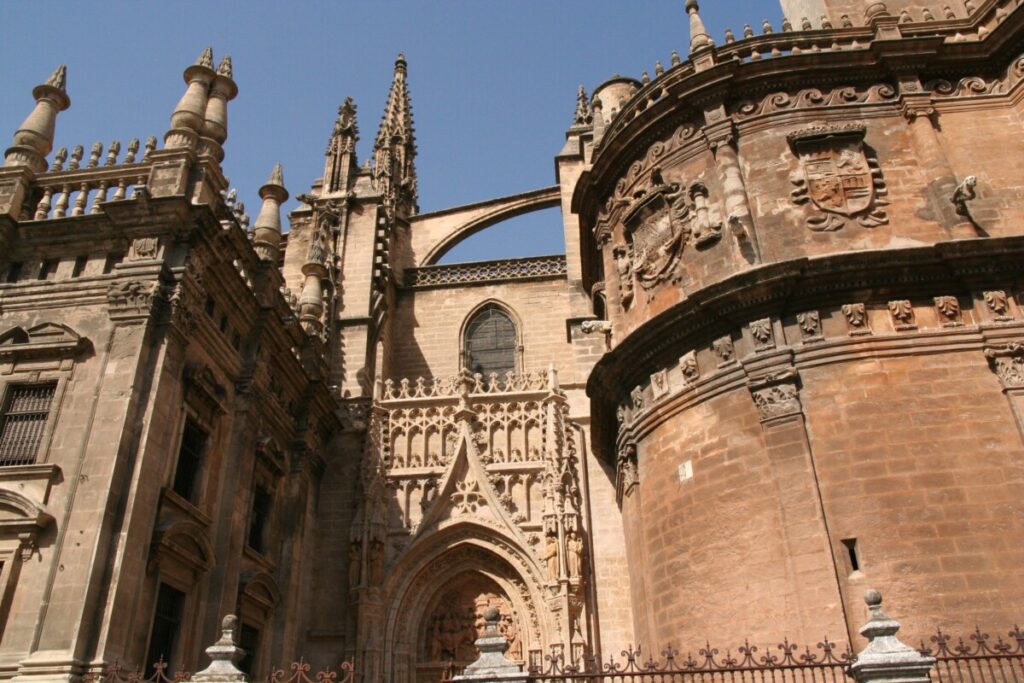
The cathedral began its life as a mosque. Construction started in 1172 and was completed in 1198. Shortly after Ferdinand III recaptured the city in 1248, the mosque was converted into a cathedral. The same happened with the cathedral in Cordoba, but in Cordoba, the building retains more of its Moorish heritage.

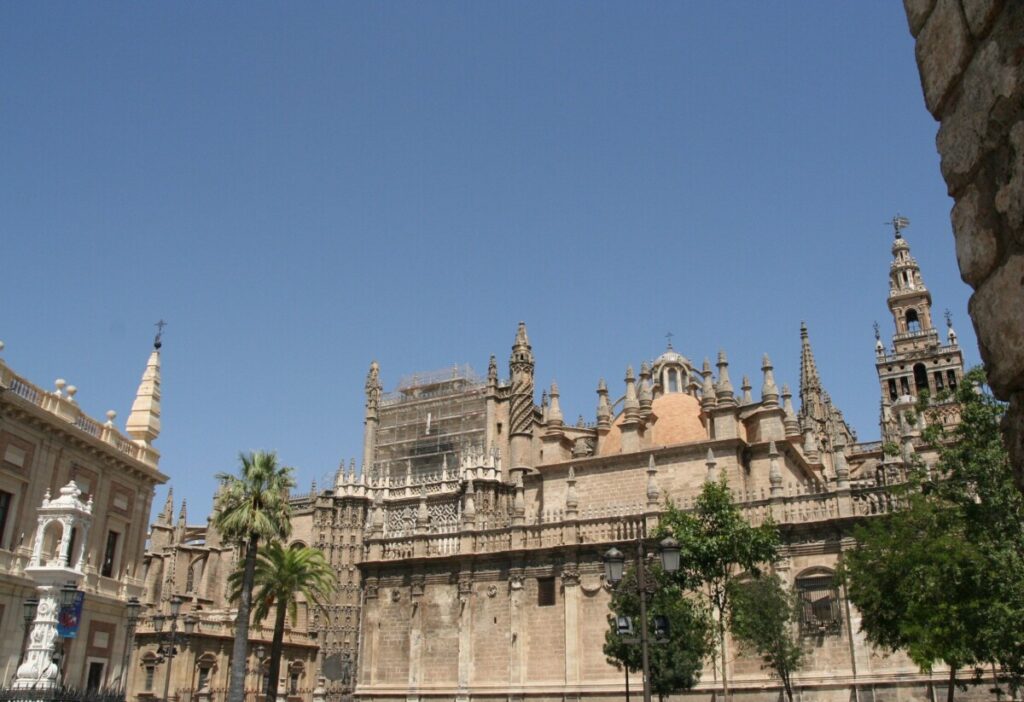
From 1434 and almost continuously until 1517, the building was gradually transformed into a Gothic cathedral. It was meant to showcase the city’s wealth and prosperity as an important trading center after the reconquest in 1248. However, the renovation faced several setbacks. For instance, the cathedral’s dome collapsed twice.
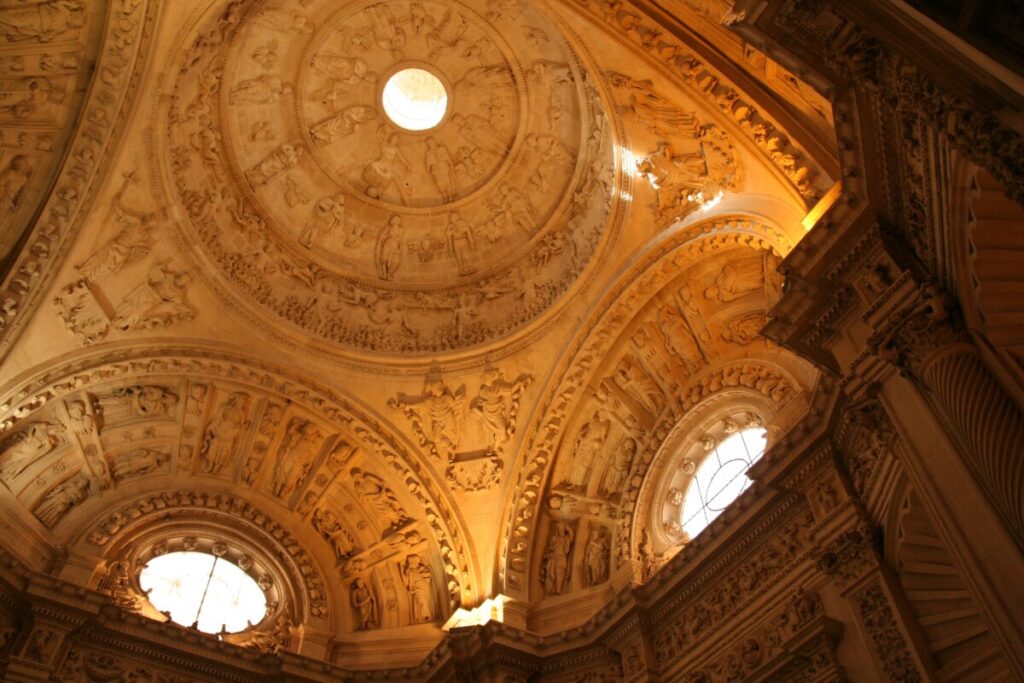
The last collapse occurred in 1888 due to an earthquake, and reconstruction continued until 1903. Inside the cathedral, you can see the tomb of Christopher Columbus, among other notable features.
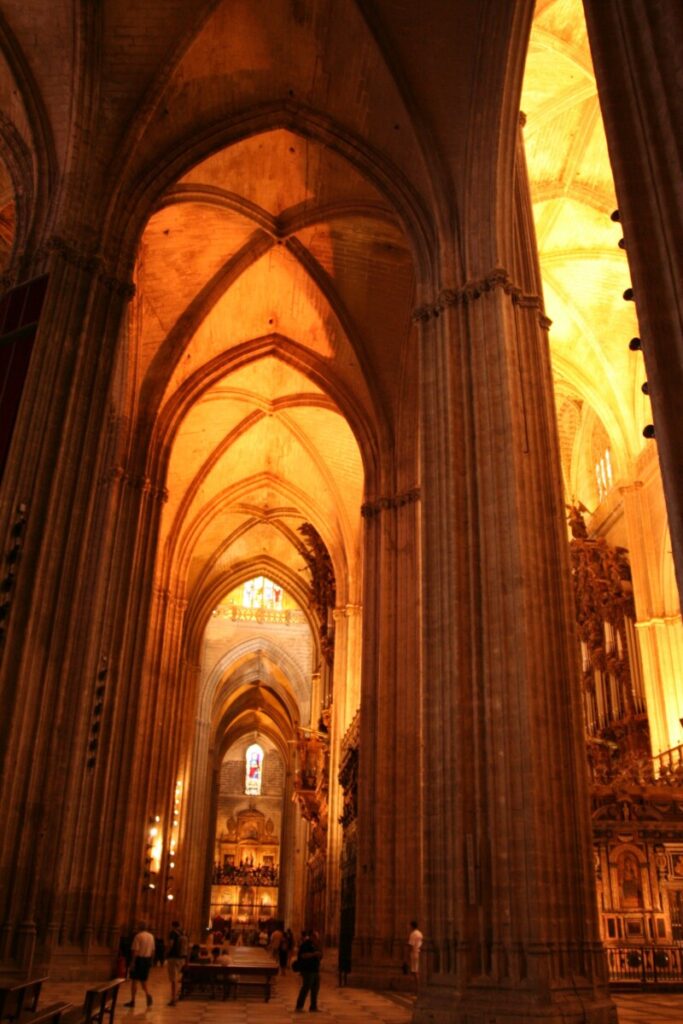

The bell tower, known as La Giralda, stands outside the church and is 105 meters tall. It was originally the minaret of the mosque, modeled after the minaret of the Koutoubia Mosque in Marrakech, Morocco. The minaret was completed in 1198. In the 16th century, after the bells were added, a statue called “El Giraldillo” was installed at the top to symbolize the triumph of Christianity.
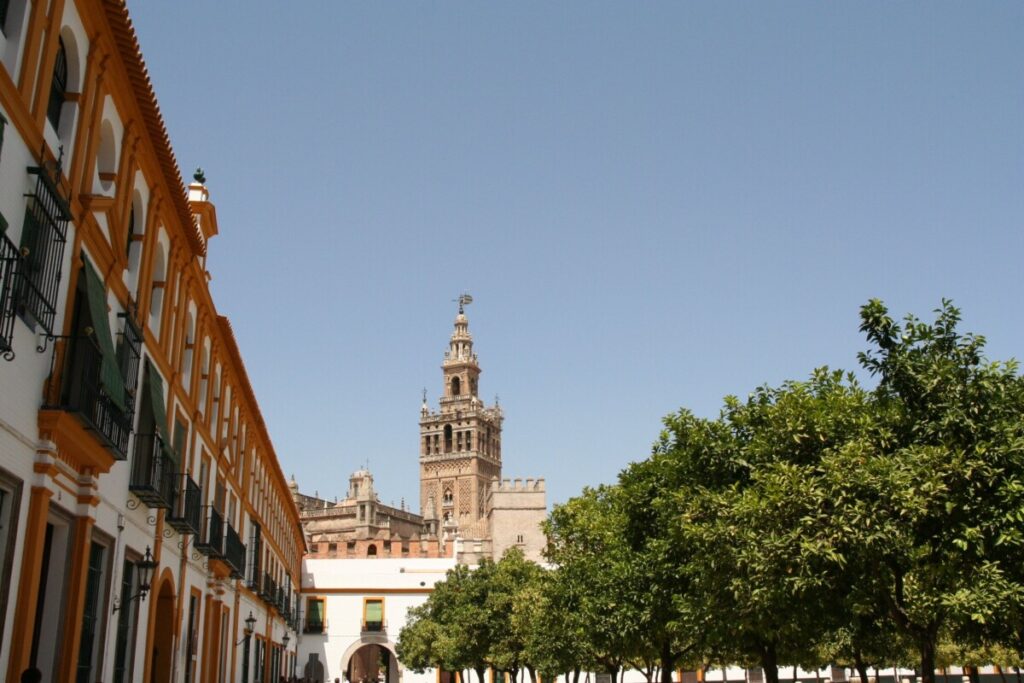
Real Alcazár
After visiting the cathedral, we strolled across the plaza through the Lion Gate, Puerta del León, and into Alcazar. The royal palace was built by Castilian Christians on the site of a former Muslim fort. The word “alcazar” comes from the Latin “castrum” via the Arabic “al-qaṣr,” meaning “the castle” or “the palace.”
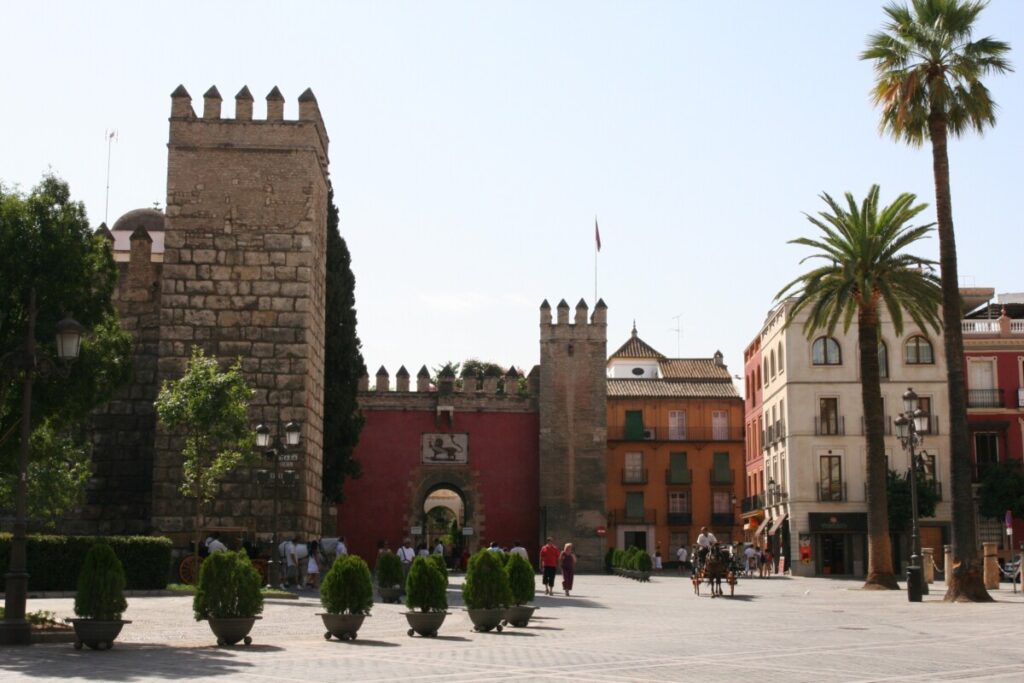
The fort was destroyed after the Christians recaptured Seville. The palace is a stunning example of Mudéjar architecture on the Iberian Peninsula. Mudéjar refers to Arabic or Moorish-inspired architecture that flourished in Spain, particularly in the regions of Aragon and Castile between the 12th and 16th centuries.

In addition to Mudéjar architecture, Alcazar features Gothic and Renaissance elements. The upper floors of Alcázar are still used by the Spanish royal family when they visit Seville.
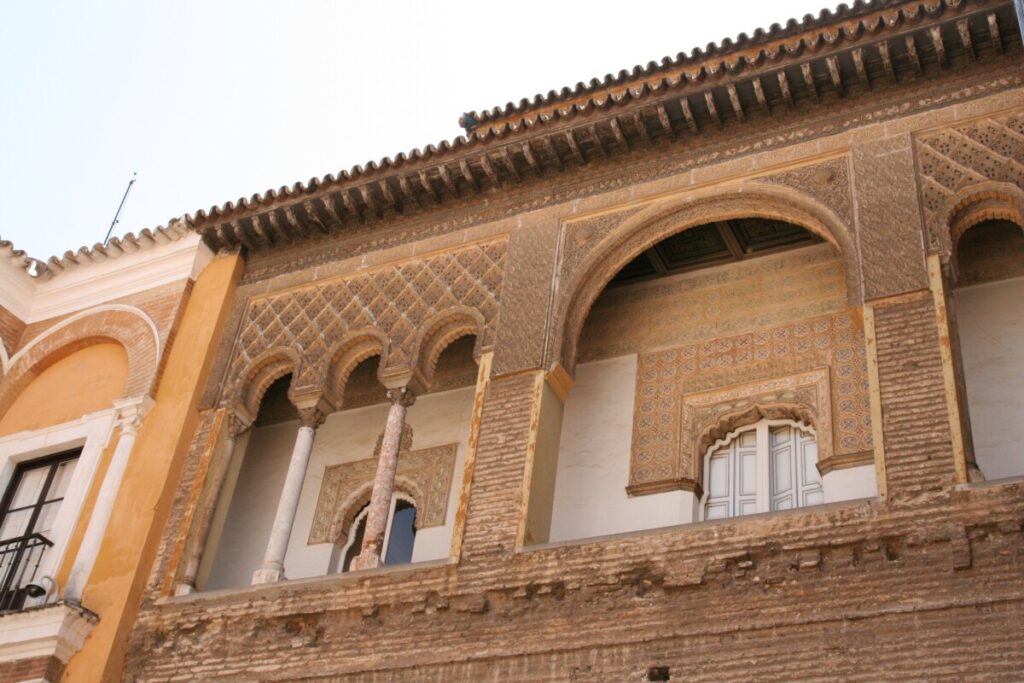
Looking at the pictures from Alcazar now, I recognize many stylistic elements from the palaces I saw in India, such as the Red Fort in Agra.
Seville was occupied by the Umayyad Caliphate in 712. In 913, the first caliph of Andalusia built a fort, which was later expanded with new palaces, stables, and storerooms. Seville eventually became the capital of Al-Andalus, and Alcazar served as the caliph’s primary residence.
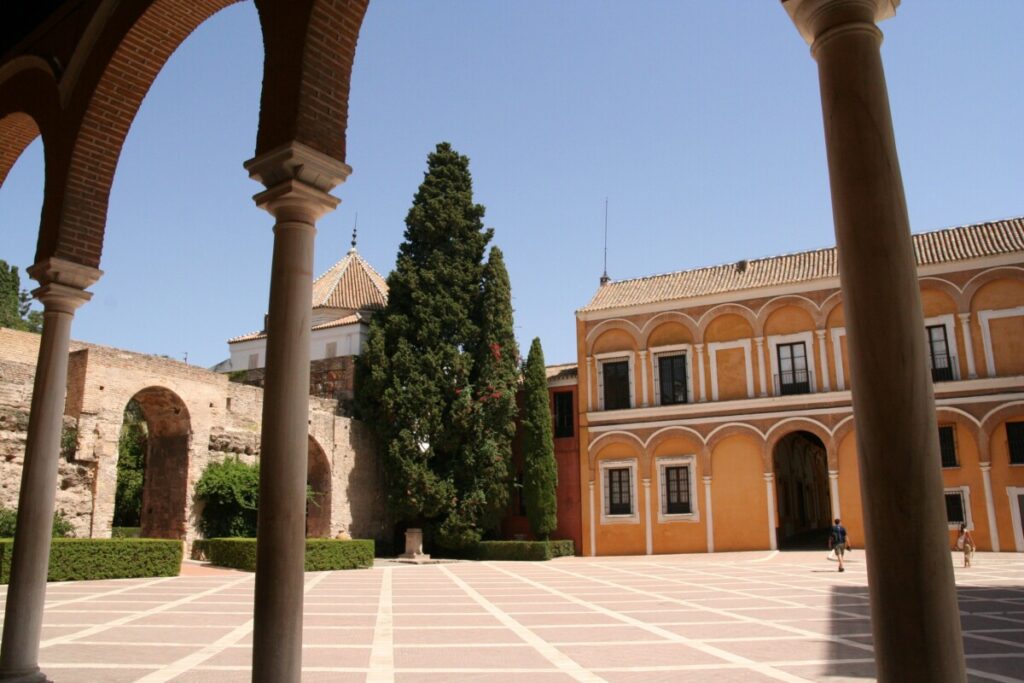
The caliph retained the walls from an earlier structure but demolished all other buildings and constructed 12 new palaces. After the Christian reconquest of Seville, Alcazar was converted into the residence of the Christian monarchs. Between 1364 and 1366, King Pedro I built the Mudéjar Palace in the Andalusian Mudéjar style.
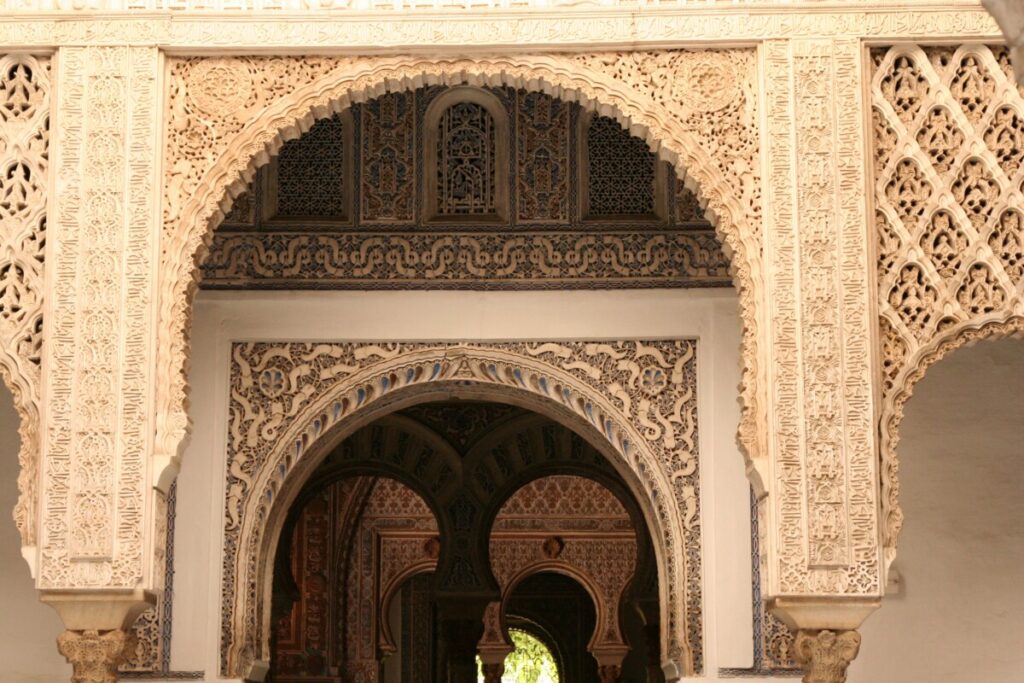
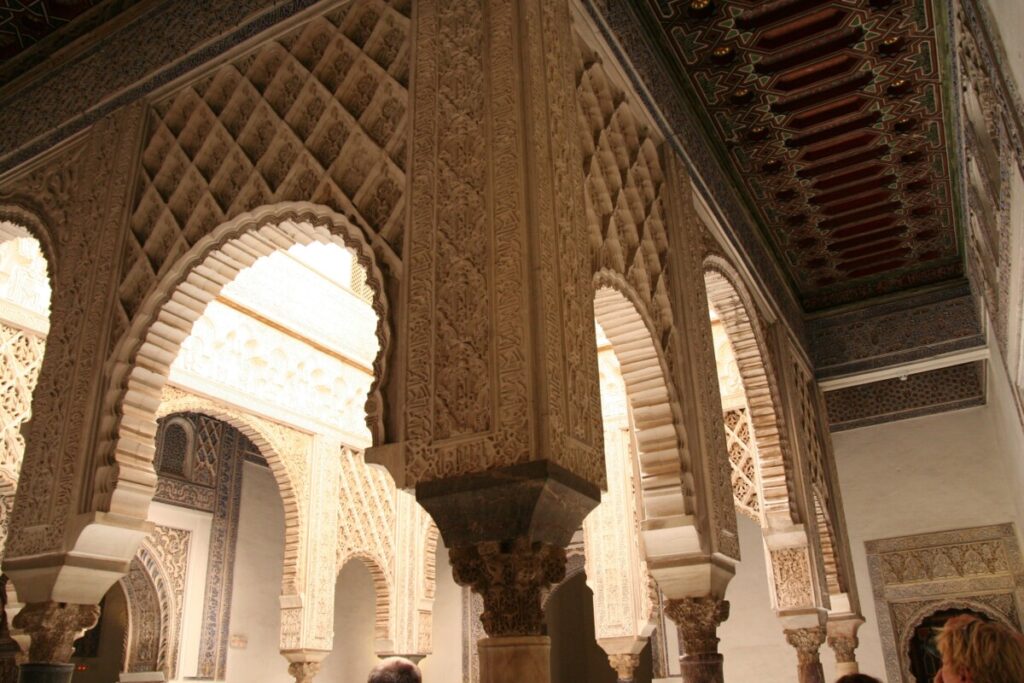
Blend of Architectural Styles
Over the 500-year construction period, the palace has incorporated various architectural styles. Nothing remains of the original palace, but it likely followed Muslim building traditions with Islamic patterns and ornaments.

Several large gardens were constructed, and over time, many different “Western” styles were introduced. Simultaneously, many Islamic decorations and ornaments were used. Today, the palace is a unique blend of architectural styles.

The gardens and park areas are vast, offering a delightful respite under shady trees and alongside trickling water, especially during the hottest part of the day. The gardens were used for both cultivating food and serving as a recreational area for the residents.
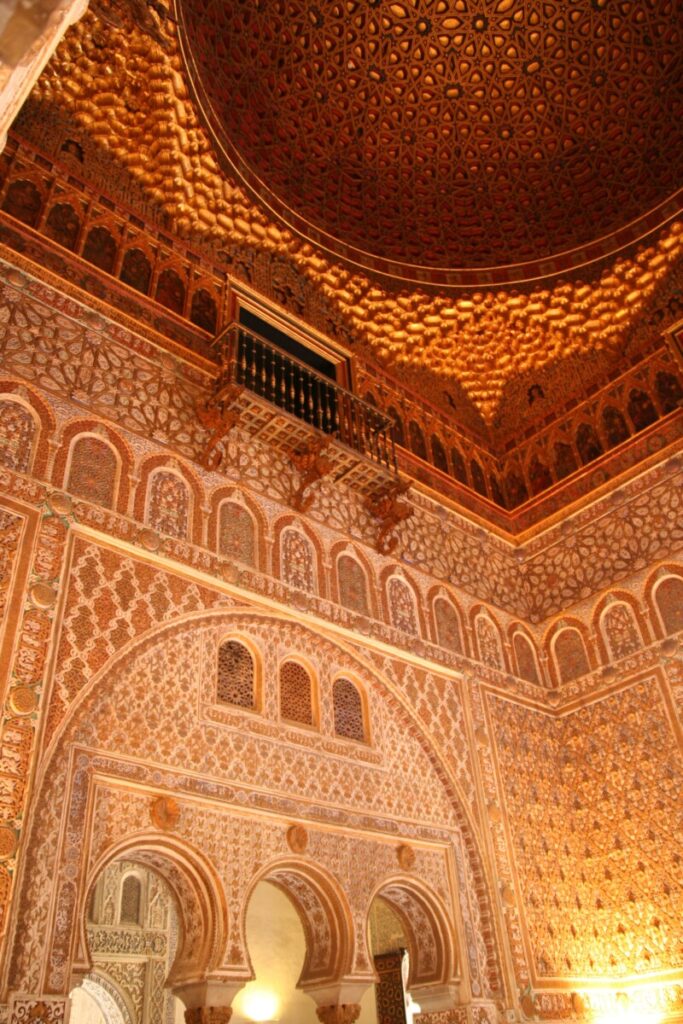
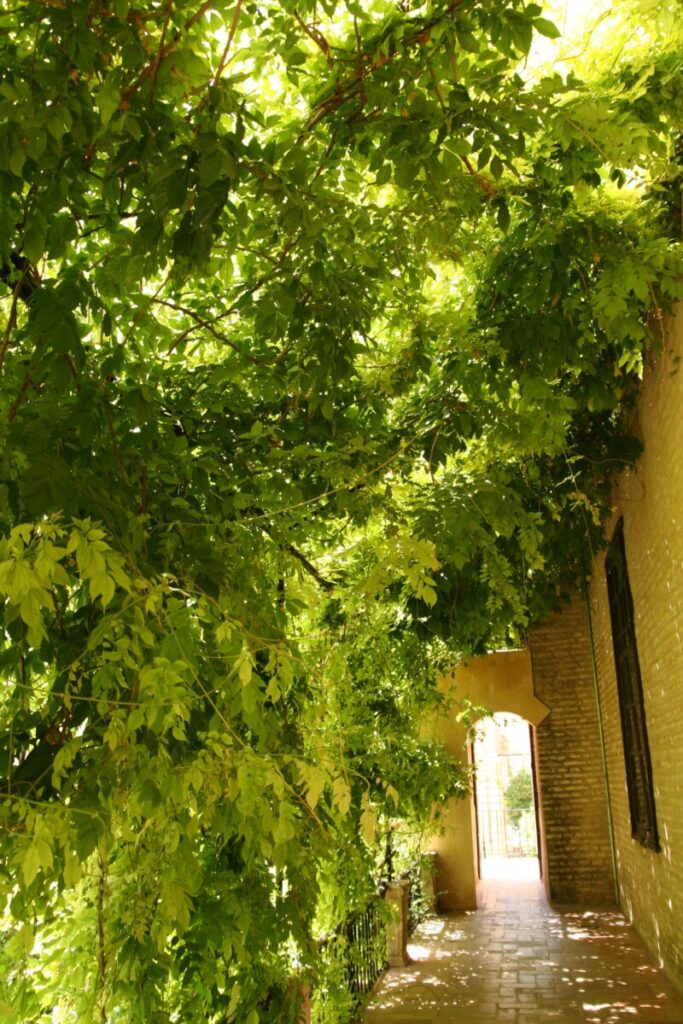

Alcázar has been featured in several films, including “Lawrence of Arabia” in 1962 and “Kingdom of Heaven” in 2005. Parts of season 5 of “Game of Thrones” were also filmed at various locations in Seville, including Alcázar.
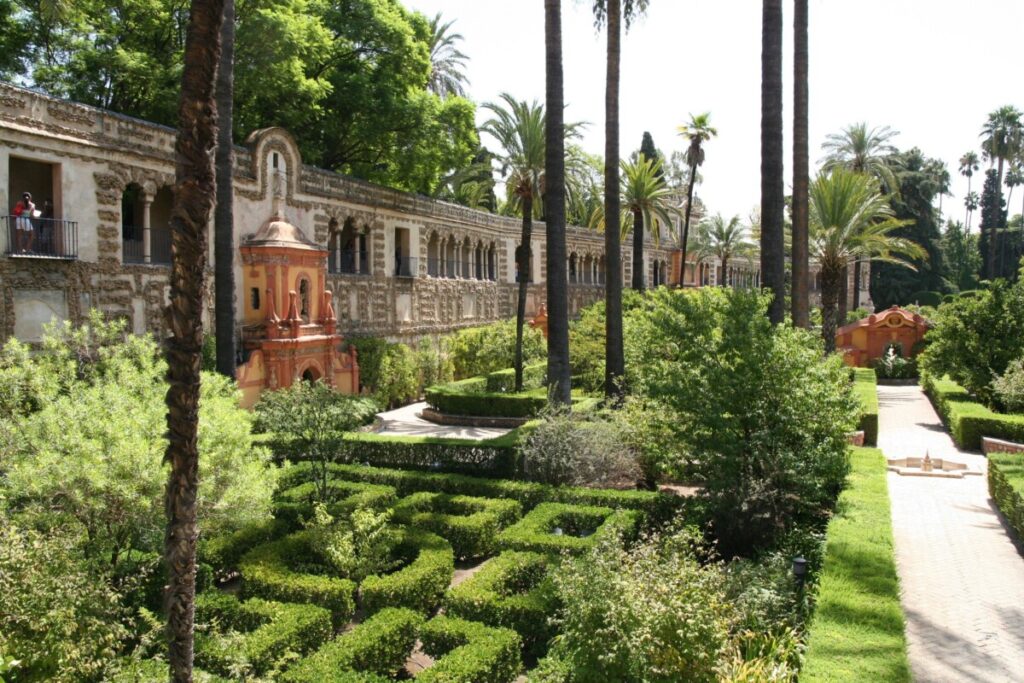
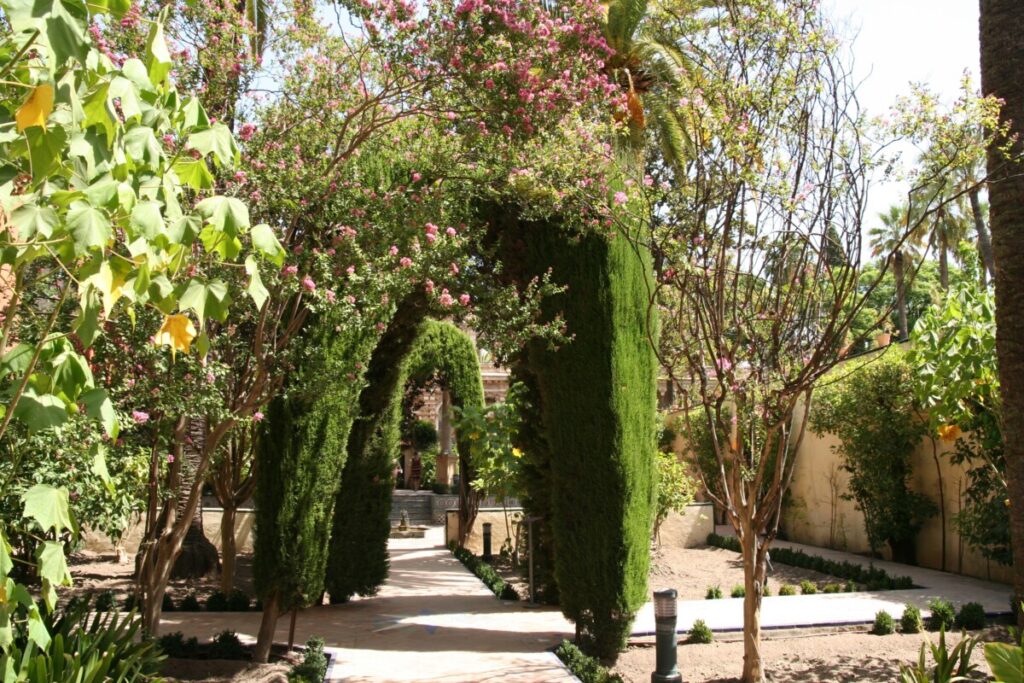
Scorching Heat
After lunch, the entire city remained closed for several hours, making it impossible to escape the heat with a cooling shopping trip.
In France, we’re used to things closing for a couple of hours midday for lunch. But in Spain, shops remain closed for a few hours even after lunch, making it a bit challenging to wander around closed streets.
A sightseeing bus was a great solution. We passed several notable landmarks, including the famous Torre del Oro by the banks of the Rio Guadalquivir.
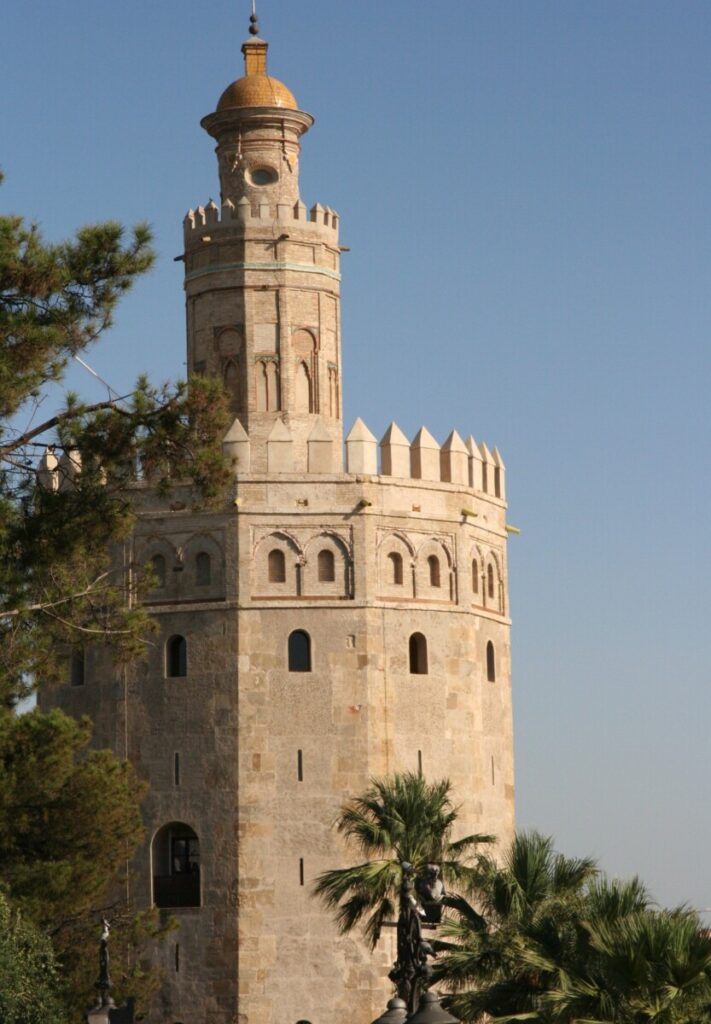
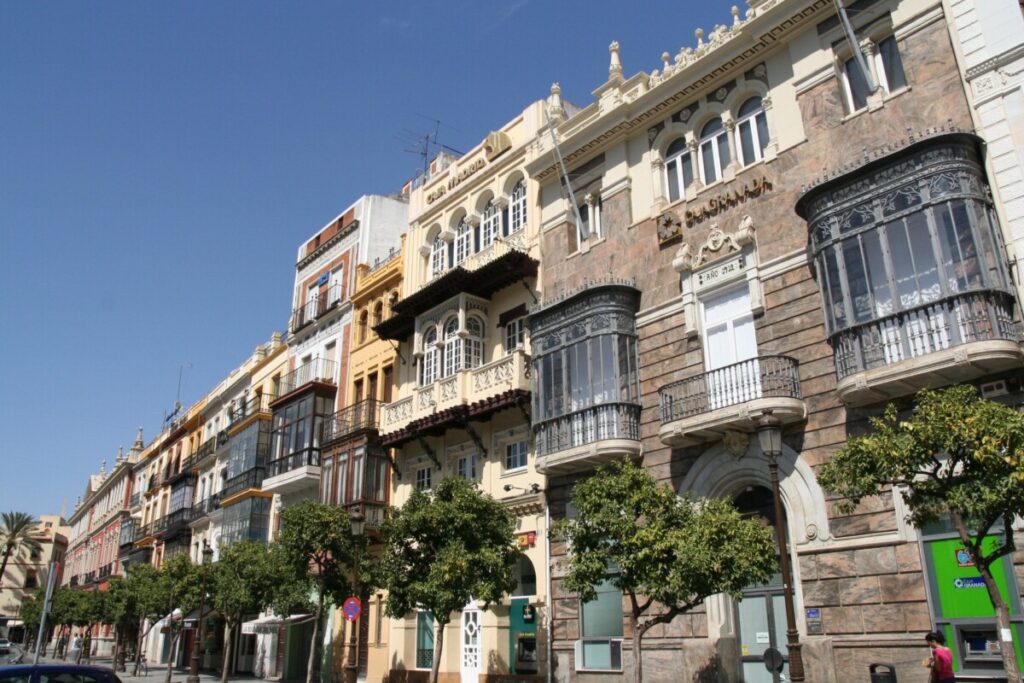
Seville is a beautiful city that deserves more than a day trip. Next time, it would be worth staying a couple of nights, preferably in the spring to avoid the heat.

